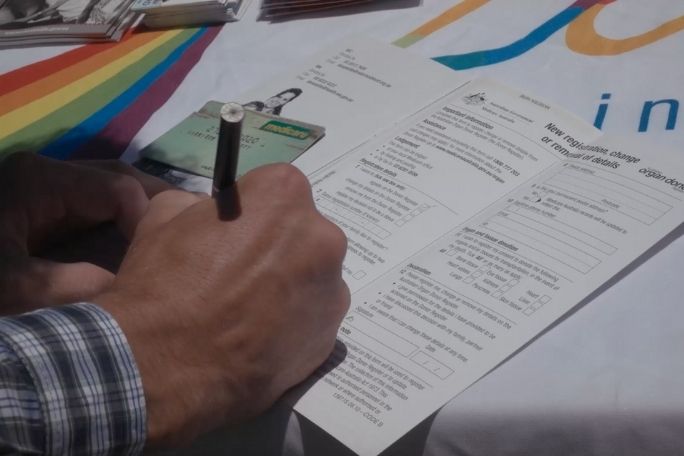Lesson summary
In this lesson, students are introduced to the topic of organ and tissue donation and transplantation. They watch a clip from the documentary film Dying to Live, and assess their understanding of the clip by completing a ‘See-Think-Wonder’ visible thinking routine. Students then work in pairs to conduct an investigation into what they are wondering about the topic of organ and tissue donation. The class then participates in a circle discussion, where new knowledge and understanding about organ and tissue donation is shared.
Learning intentions:
Students will...
- understand more about organ and tissue donation
- be able to frame questions about a challenging issue
- be able to present information about organ and tissue donation to their peers
Success criteria:
Students can...
- frame research questions
- read and interpret information about organ and tissue donation
- engage in and contribute to a class discussion
Lesson guides and printables
Lesson details
Curriculum mapping
Australian curriculum content descriptions:
Year 7 English:
- Identify and explore ideas and viewpoints about events, issues and characters represented in texts drawn from different historical, social and cultural contexts (ACELT1619)
- Use comprehension strategies to interpret, analyse and synthesise ideas and information, critiquing ideas and issues from a variety of textual sources (ACELY1723)
Year 8 English:
- Explore the ways that ideas and viewpoints in literary texts drawn from different historical, social and cultural contexts may reflect or challenge the values of individuals and groups (ACELT1626)
- Use comprehension strategies to interpret and evaluate texts by reflecting on the validity of content and the credibility of sources, including finding evidence in the text for the author’s point of view (ACELY1734)
Syllabus outcomes: EN4-8D, ENLS-16D, EN4-2A, ENLS-5A, ENLS-7A
General capabilities: Literacy, Ethical understanding
Relevant parts of Year 7 achievement standards: Students explain issues and ideas from a variety of sources, analysing supporting evidence and implied meaning. They select specific details from texts to develop their own response, recognising that texts reflect different viewpoints. They listen for and explain different perspectives in texts. They make presentations and contribute actively to class and group discussions, using language features to engage the audience.
Relevant parts of Year 8 achievement standards: Students interpret texts, questioning the reliability of sources of ideas and information. They select evidence from the text to show how events, situations and people can be represented from different viewpoints. Students create texts for different purposes, selecting language to influence audience response.
Unit of work: Dying To Live – English – Year 7 & 8
Time required: 60 mins
Level of teacher scaffolding: Medium – facilitate class discussion
Resources required
- Student Worksheets – one copy per student
- Sticky notes (at least four per student)
- Device capable of presenting a clip to the class
- Web-enabled device (one per pair of students)
- Optional: butcher’s paper
Skills
- Communication
- Critical thinking
- Digital literacy
- Empathy
- Ethical understanding
Additional info
Dying To Live is a documentary feature film that examines organ and tissue donation and transplantation in Australia through seven different stories that highlight the social, physical and emotional effects of being on the organ donor waiting list. The film also aims to dispel myths about organ and tissue donation while encouraging family conversations so that family members are aware of their loved ones’ donation intentions. Find out how to screen or view the film here.


Welcome back!
Don't have an account yet?
Log in with:
By signing up to Cool.org you consent and agree to Cool's privacy policy to
store, manage and process your personal information. To read more, please see
our privacy policy here(Opens in new tab).
Create your free Cool.org account.
Many of our resources are free, with an option to upgrade to Cool+ for premium content.
Already have an account?
Sign up with:
By signing up to Cool.org you consent and agree to Cool's privacy policy to
store, manage and process your personal information. To read more, please see
our privacy policy here(Opens in new tab).